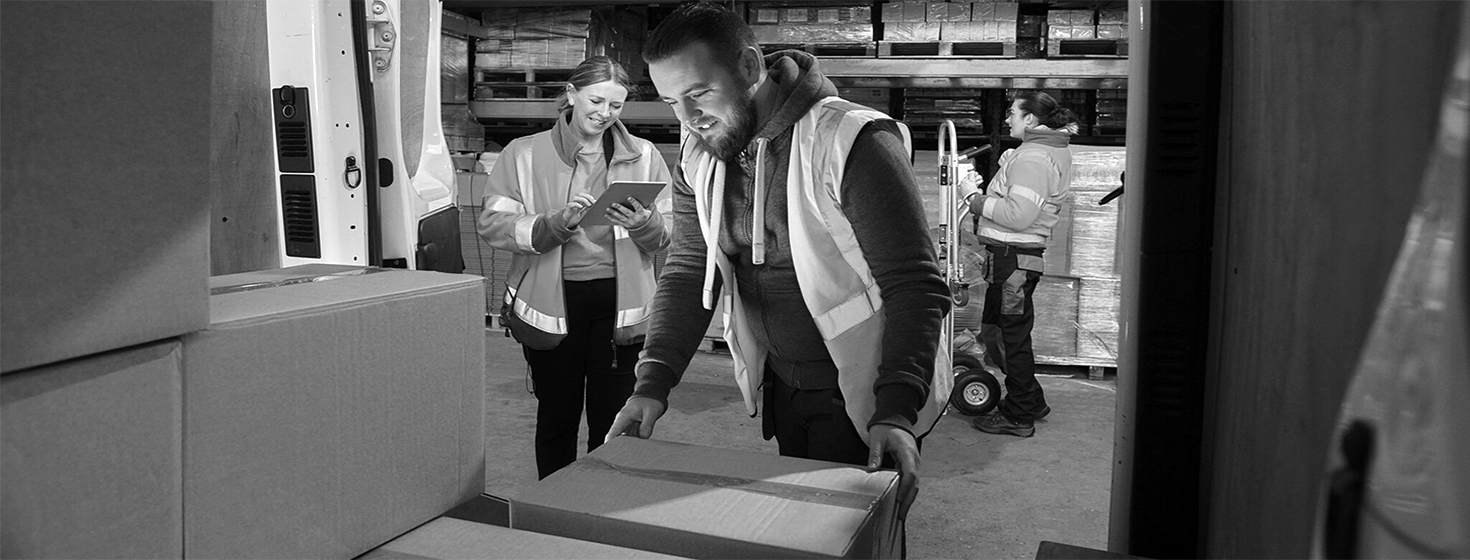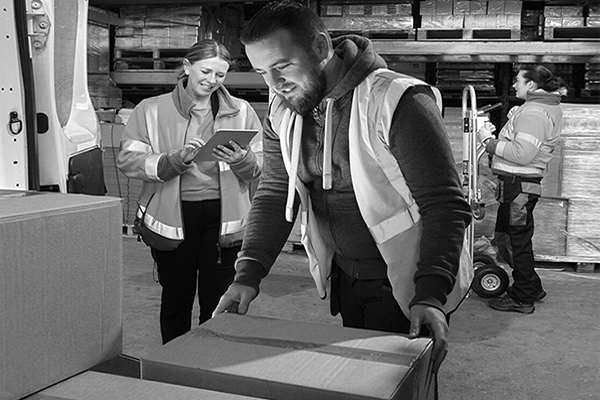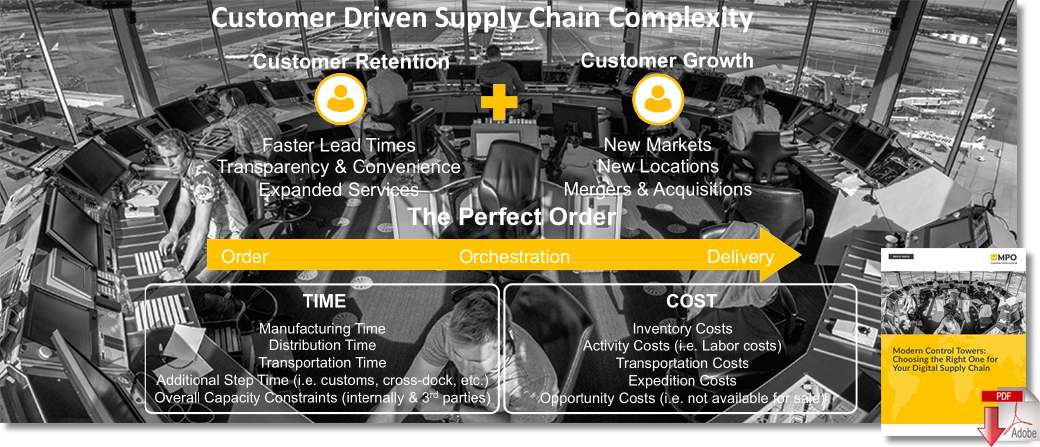The Rewards of Getting Returns and Reverse Logistics Right

With at least 30% of products ordered online being returned and shoppers wanting free return shipping, it's clear that a well-managed returns policy will attract new customers and boost loyalty, but how to achieve it is another matter.
Managing Reverse Logistics
Customer expectations are shifting fast and there are different challenges inherent in managing reverse logistics and returns for B2B and B2C.
The returns economy in ecommerce is a real opportunity to shine, but you need a solid foundation in place.
With the right approach, you can tame your returns processes, keep costs under control, and provide the kind of excellent service that differentiates your business from the competition.
At least 30% of products ordered online are returned, compared to almost 9% in brick-and-mortar stores, according to stats collected and presented by invesp.
They also show that 79% of consumers want free return shipping and that as many as 67% of shoppers check the returns page before they purchase online. 92% say they will buy again if returns are easy.
So, it’s clear that a well-managed returns policy will attract new customers and boost loyalty, but how to achieve it?
Visibility and Control
Consider that only 42% of retailers surveyed by ARC Advisory Group and DC Velocity were able to say that they fully understood the financial impact of returns on their business, while 27% admitted that they guess or can’t measure it at all.
Gaining insight into the process and associated costs is a vital first step.
Creating a top-quality customer experience starts with complete visibility into the forward or reverse flow for all orders.
If you want to give customers a wide choice, fast service, low cost, and high reliability, then you need to carefully orchestrate your supply chain.
You need to combine that visibility with control on a very granular level for precise, real-time planning and execution of all the steps required for each and every order.
End-to-end optimization is the path to satisfied customers and reduced costs, but you can’t achieve it without the right tools.
Adopt a Control Tower
A control tower platform can be layered on top of your disparate systems, marrying all the data from warehouse management software, carrier systems, transport tracking, e-commerce systems, CRM, ERP, and everything else.
A control tower gives you the big picture, single source of truth view that you need to be able to make the right decisions for your customers and your business.
It’s not just about linking field engineers, logistics service providers, customer service departments, and repair centers together, but also enabling them to collaborate.
You can drill down in the planning stage and individually optimize every order and return. Find the best parties, the best timing, manage your inventory closely, and map complex multi-leg flows.
This is the end-to-end management of every aspect of the order lifecycle.
Download Modern Control Towers: Choosing the Right One for Your Digital Supply Chain
You can also see the progress in real-time, create alerts so that you’re alerted to potential problems before they develop, and keep a tight rein on costs. When the order is complete, check cost incurred against expected cost and analyze your service providers’ performance.
Finally, you can collect and allocate the cost of all the activities and project them on the return order, giving you an interval cost picture per order and analysis on the supply chain landed cost for your reverse books.
Managing Complex Dependencies
In the B2B world, you have a complex returns landscape with SLAs (service level agreements) to consider.
Customers need to ship back defective or faulty parts to return centers, where they typically get sent onto larger distribution centers. They need to be inspected and then repaired or rerouted to recycling or back into stock. When a repair is required you need to choose the right repair center or vendor.
All the while, your customer service department must be kept up to date on progress, so they can keep the customer happily informed.
There’s a lot of complexity in the average aftermarket supply chain.
With the end-to-end order visibility and inventory availability a control tower can establish, it’s possible to provide faster and more reliable service to customers, but also to conduct the kind of analysis that empowers you to drive continuous improvement going forward.
There’s simply no way of delivering omnichannel capabilities cost-effectively without granular insight and real-time control.
Remember that the initial investment required to establish supply chain orchestration will soon be recouped by tighter cost control and an increase in new and repeat business.
About the Author
Martin Verwijmeren is co-founder and Chief Executive Officer of MP Objects, a leading provider of smart cloud software for supply chain orchestration with offices in Boston, Rotterdam, Tokyo, and Hyderabad. He was previously vice president of IT for CEVA Logistics. He has a Ph.D. in distributed systems for integral inventory management from the Eindhoven University of Technology. Contact him at [email protected].
Modern Control Towers: Choosing the Right One for Your Digital Supply Chain
In Pursuit of the Perfect Order
Customer expectations are higher than ever. There’s a growing demand for fast lead times, complete transparency on order progress, and an expanded set of services. Customer experience is absolutely vital for any company seeking a competitive advantage. Forrester calls this “the age of the customer” and it’s crucial to ensure your customers get what they want when they want it.
What is the perfect order? In simple terms, you want to fulfill customer orders, deliver them on-time and in-full (OTIF), but also do so profitably, which means controlling costs. If you please your customers by meeting their rising expectations, then they will come back for more, and customer retention is vital for any healthy business.
Download the Paper Modern Control Towers: Choosing the Right One for Your Digital Supply Chain
Article Topics
MPO News & Resources
TMS+ Go Beyond Transport to Optimize Cost, Service, & Resiliency Multi-Party Orchestration Platform When It Comes to Digital Transformation You May Not Be Doing What You Think How Chief Operating Officers are Achieving Results with Supply Chain Software SPARK Matrix Transportation Management System Software Analyst Report Top Trends Driving Change and Technology Strategy Within Logistics & Transportation Management 5 Key Steps for Optimizing your Last Mile Delivery More MPOLatest in Supply Chain
Microsoft Unveils New AI Innovations For Warehouses Let’s Spend Five Minutes Talking About ... Malaysia Baltimore Bridge Collapse: Impact on Freight Navigating TIm Cook Says Apple Plans to Increase Investments in Vietnam Amazon Logistics’ Growth Shakes Up Shipping Industry in 2023 Spotlight Startup: Cart.com is Reimagining Logistics Walmart and Swisslog Expand Partnership with New Texas Facility More Supply Chain














